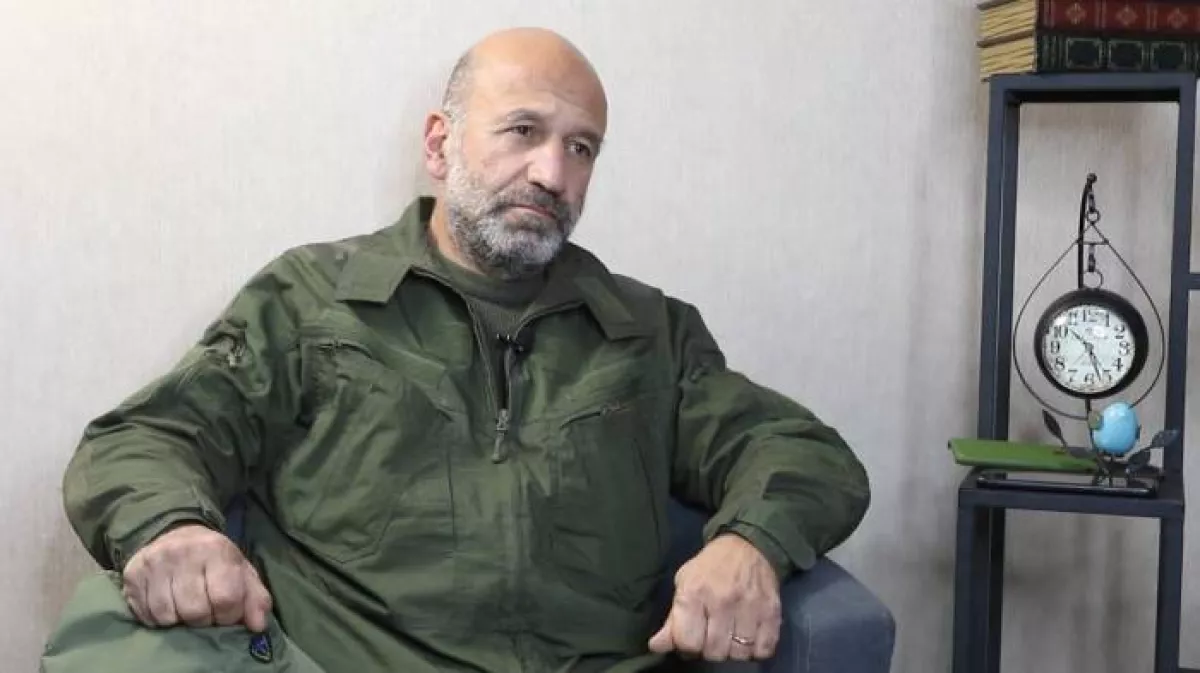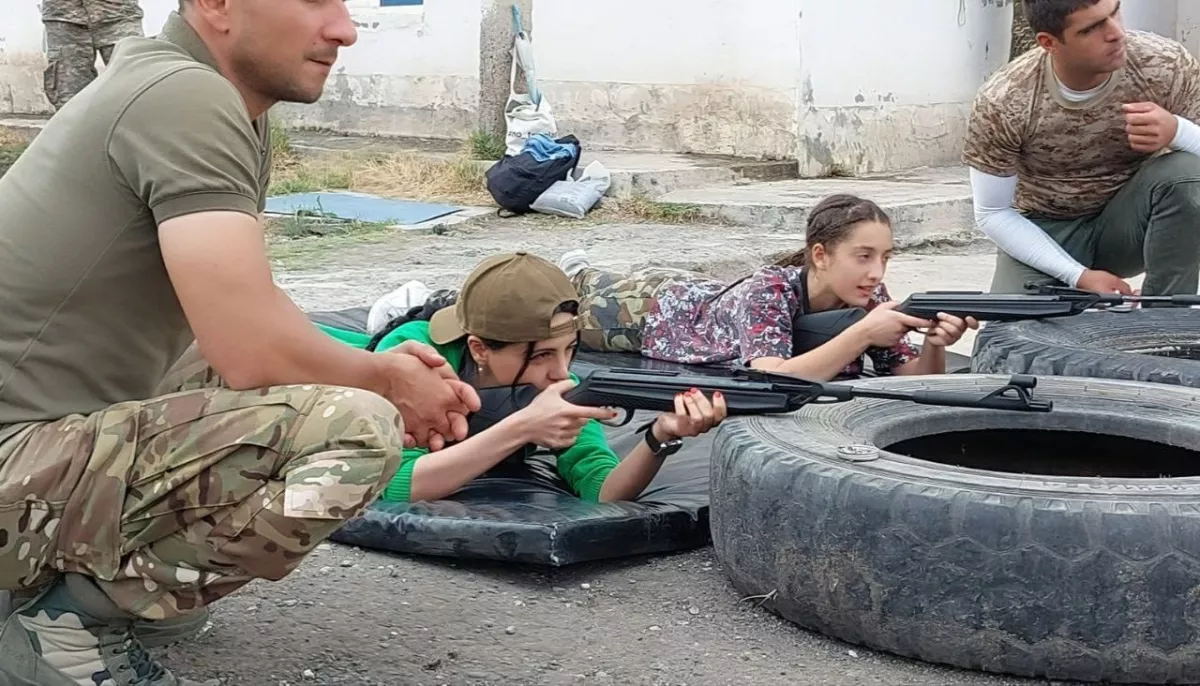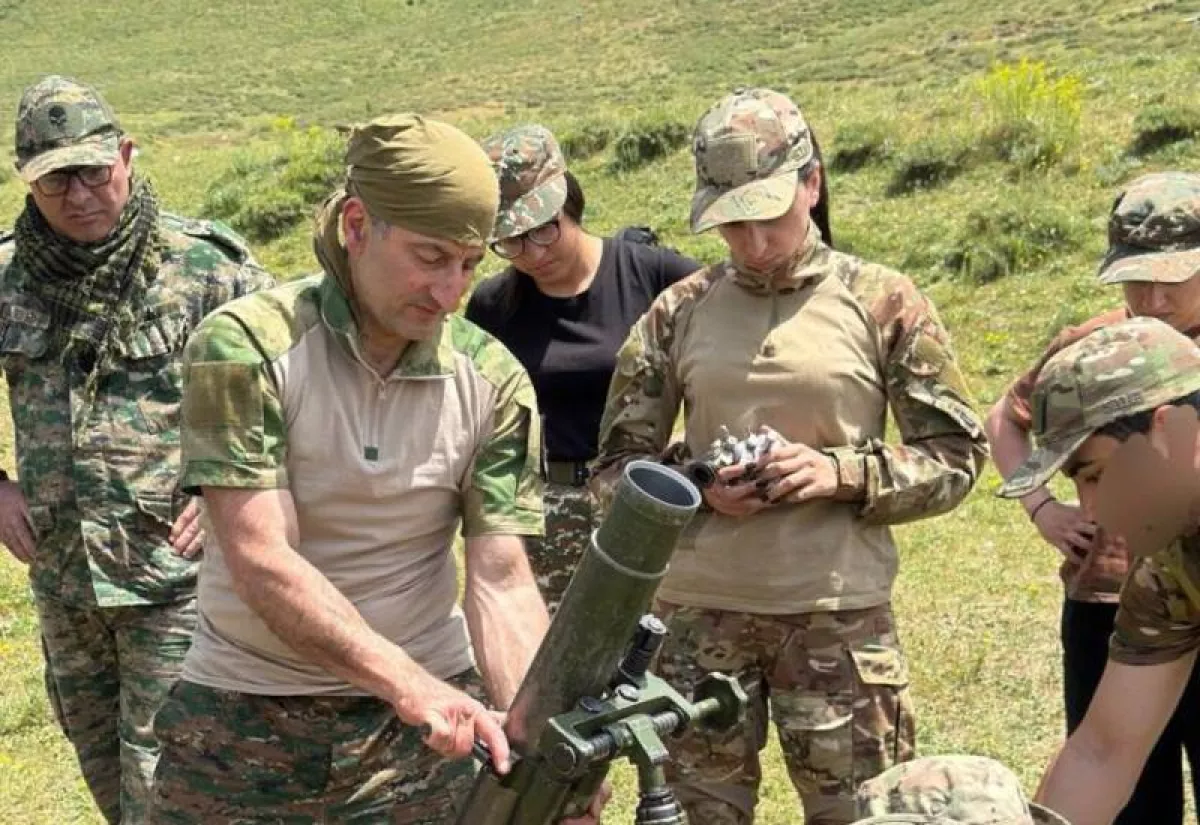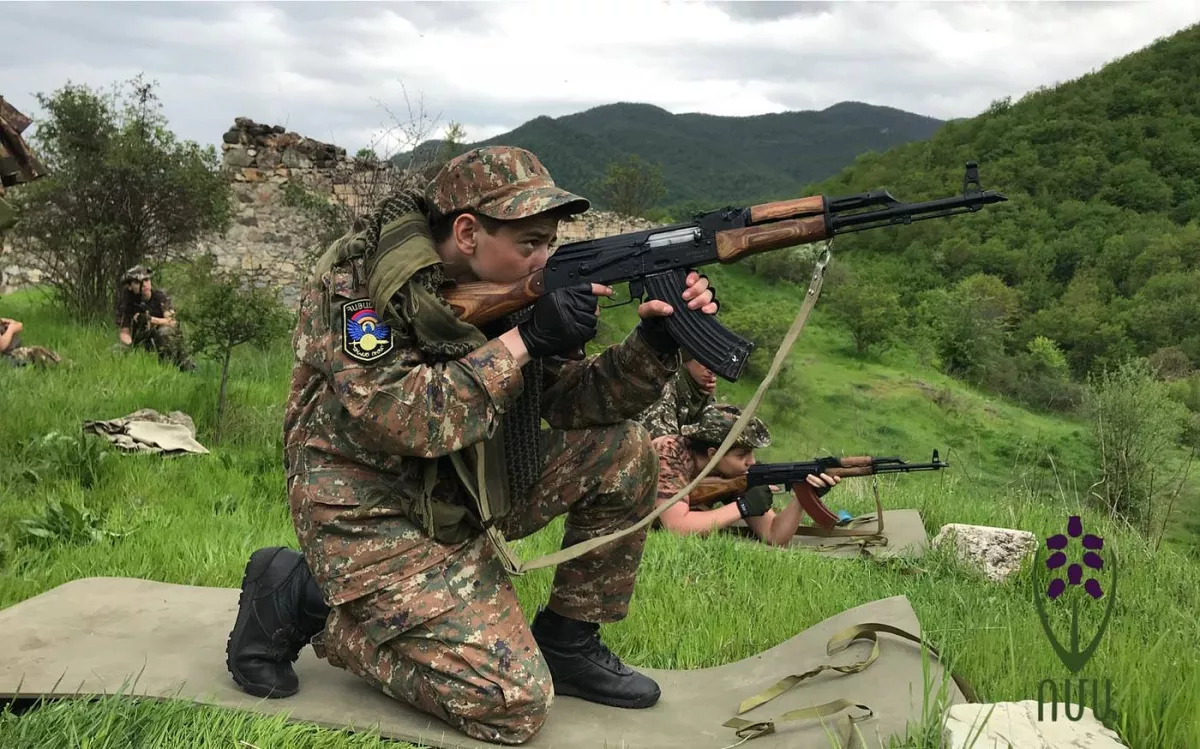“Patriotic” camouflage for provocations VOMA is preparing saboteurs near Azerbaijan’s borders
Earlier this spring, Caliber.Az, based on information from informed sources, reported that intense preparations are underway in Armenia to carry out terrorist attacks against Azerbaijan. At the forefront of this process is the notorious terrorist organisation VOMA, which is actively training “specialists of the relevant profile” for sabotage warfare against the country. However, VOMA is far from being alone — there are other terrorist groups of a smaller scale on Armenian territory, most of which are barely controlled by Pashinyan’s government. These groups also involve minors. But it is precisely VOMA that plays the leading role in this area.
The activities of the organisation, led by saboteur and war criminal Vova Vartanov, which is presented in the Armenian media space as a military-patriotic initiative, are increasingly revealing their true nature — a structure forming cadres for terrorist activities against Azerbaijan. This group actively uses Telegram to spread announcements about military gatherings, choosing locations for their camps as close as possible to the border with Azerbaijan. The latest example is the announced gathering, scheduled for August 15–24, in the village of Atan in the Lori region, which is part of historic Western Azerbaijan.

This location was chosen deliberately. The village lies 14–16 kilometres from the Azerbaijani village of Yukhary Askipara, which remains under Armenian occupation, and only 2–4 kilometres from the administrative border with the Tavush region (Tovuzgala – editor’s note). The mountainous and rugged terrain, combined with dense forest, creates ideal conditions for covert training of small sabotage groups, practising survival tactics, and conducting combat operations in environments close to real conditions.
Formally, the training program includes firearms training, mountaineering, tactical exercises, first aid, physical conditioning, and organising marches. However, the content of VOMA’s promotional materials published online reveals the true purpose of these courses. Videos show sessions on infiltration behind the frontline, clearing roads of TM-62 anti-tank mines, practising ambush scenarios, and staged sequential retreats with evacuation of the wounded. The training involves dividing groups into covering units and sappers, matching tactics used to support the advance of motorised and armoured groups of regular army units.
Particularly telling are the exercises with simulated RPG-7 anti-tank grenade launcher firing and long forced marches carrying full combat gear across mountainous terrain. These training elements clearly exceed the scope of “civil defence” education and indicate a deliberate development of skills for conducting sabotage and terrorist acts on Azerbaijani territory.

Particular attention should again be paid to the participation of minors in the training camps. VOMA employs them under the guise of a “patriotic youth education” concept, which in practice serves as a cover for involving children in the creation of a radicalised mass. This practice echoes methods used by terrorist organisations in the Middle East, where “children’s camps” became incubators for future fighters who underwent ideological and military conditioning.
The base in the village of Atan was completed in early 2025 with funding from the Armenian diaspora. Within a short time, small barracks, a specially equipped obstacle course, and a shooting range appeared here. This indicates targeted investments in infrastructure capable of functioning as a full-fledged training centre for saboteurs. A similar base operates in the village of Achajur (Haçasu) in the Tavush region, located close to the border with Azerbaijan. In addition to standard disciplines, the training programme there includes basic artillery knowledge and practice with 82- and 120-mm mortars, as well as military mountaineering.

It’s ironic but true: VOMA itself justifies the placement of its bases as a necessity to raise the military training level of the local population. However, it is obvious that behind this façade lies work on creating sabotage cells ready to act in the event of political or military escalation. In conditions of a partially delimited and demarcated border, such structures become a threat that cannot be ignored.
The experience of the Karabakh conflict clearly shows that passivity toward such initiatives leads to catastrophic consequences. Today, with the Armenian army weakened and unable to engage in open confrontation, the focus is on preparing networked structures and “guerrilla” groups that can keep the region in a state of permanent instability.

The systematic involvement of minors, funding from the diaspora, lack of government control, and the creation of militarised infrastructure near the Azerbaijani border allow us to assert that VOMA is part of a broader strategy to undermine peaceful settlement. If this threat is not neutralised today, tomorrow it could escalate into a new phase of confrontation, where sabotage acts become the catalyst for yet another armed clash.








